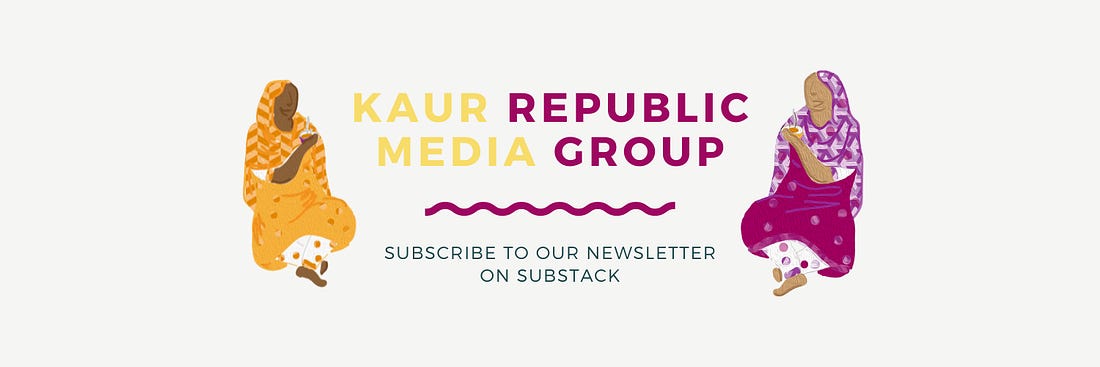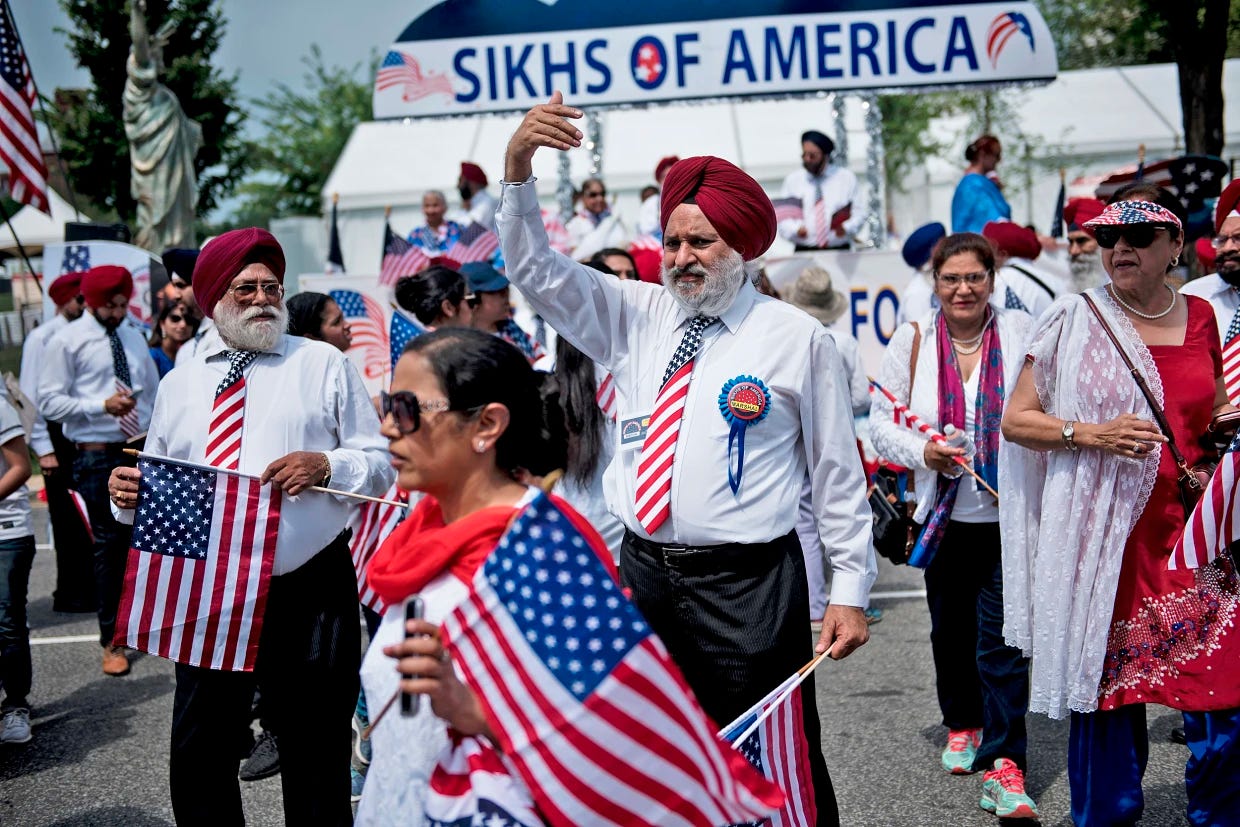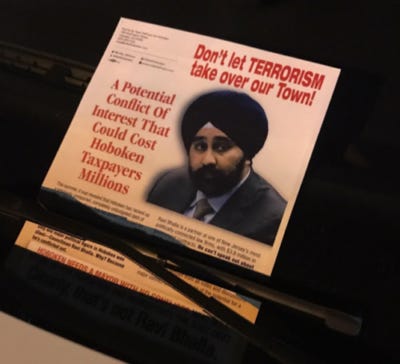Fighting Anti-Sikh Racism in the American Electoral WorldAs 2024 is upon us and both political parties gear up for election, the emergence of Sikh Americans as a voting electorate that is growing poses challenges and opportunities.As America heads back to the polls in 2023 and 2024 the reality of hate based violence is also following us into the polling booth. There have been many instances over the years where Asian American voters have been discriminated against at the poll site and broader civic space. When Sikh Americans are exercising their most fundamental right and where they have struggled to gain those rights in the first place. Coupled with our history in the United States -that being excluded and marginalized by American institutions- it is no surprise that we are also gridlocked out of the polling booth as well. With a heightened rhetoric around China from top US elected officials in the foreign policy space, to the constant attacks that Asian Americans continue to face on the streets of major metro areas like New York, San Francisco and Chicago in addition to the rest of the country, and the shameful treatment of TikTok CEO Shou Zi Chew during the March 28th Congressional hearings by the House Commerce Committee on the Safety and Privacy of TikTok, it is apparent that Republicans and Democrats at the very top are contributing to rhetoric that directly impacts our community and influences targeted violence against us. Sikh voters have faced exclusion and racism at the polls and an outright ban on our migration to the United States throughout our time in this country. Going forward, as we become more politically active, running for office and find many ways to get involved in the legislative and activist world, we must confront the racism at the ballot box and broader civic space and fight Asian American hate as a whole community. Within the last six years, Sikh Americans have made major gains in electoral contests and influence in Democratic Party politics. In the 2022 midterm elections, the candidates of Sikh heritage who campaigned on relatively progressive issues and also brought their communities into the Democratic fold to build Sikh political power helped not only to expand the electorate but also instilled a renewed interest in civic engagement and cultural connection. Hartford, Connecticut elected its first Sikh City Councilmember in 2021. Swarnjit Singh Khalsa is the Creative Director of the Sikh Art Gallery. He estimated that at the time of election, there were only ten Sikh families in the area. Compared to a state like California -which has the highest number of Sikhs in America- which elected it’s first Sikh American woman -Dr. Jasmeet Kaur Bains- to the legislature, Bakersfield City Ward 7 is now represented by Urban Planner and Community Organizer of Jakara Movement Manpreet Kaur the first Sikh woman to represent Bakersfield in this capacity, Nonprofit CEO, Entrepreneur & Philanthropist Raji Kaur Brar - the first Sikh woman to be elected to city council in California with her representation in Arvin City Council between 2006 and 2008. Brar also co-founded the Sikh Women’s Association and broadly the community has banded together to consolidate their political power in the formation of the California Sikh Democrats. Texas elected it’s first Sikh American woman to Harris County Civil Court Judge. Manpreet ‘Monica’ Singh to become Civil Court Judge at at Law #4. Sikh women are making the fastest gains in leadership in electoral offices and they are bringing their campaigns to their communities to build long-term political power but also raise awareness about what getting civic minded means. The nomination of Ajay Banga to the World Bank by the Biden Administration is shaping up to be locked in and with it, the administration’s hope is that he can bolster American leadership in the fight against climate change. The Biden administration has been steadfast about engaging India as a major ally in South Asia. Harjeet Singh of Climate Action International said: Harjeet Singh, head of global political strategy at Climate Action Network International, called Malpass’s departure a historic opportunity to “change the system.” But Banga is just old wine in a new bottle, Singh said. “He has worked in corporations whose prime motive is profit. When it comes to development, especially climate change, it is about justice and equity,” said Singh. Banga’s background “doesn’t inspire confidence,” he said. There are many more examples of Sikh firsts when it comes to leadership. outside of the coastal apparatus that Democrats have when it comes to strategy and winning in different states. What has become clear though, is that when the Democratic Party continues to neglect Sikh voters in outreach efforts -either because they don’t know how to model our last names in data for field outreach or they continue to prioritize the white blue collar worker- Asian American candidates are bringing their communities to the Democratic Party and as more historic candidates continue to break the mold of what traditional candidates look like, it will become impossible for the Democratic Party not to prioritize strategic outreach to a wider constituency and invest in year-round organizing. As more Sikhs turn their attention to what is happening at all levels of government and they understand how policy is made and influenced, it is helping our community think long term about how best to fight for change.The actions of the Indian government in coming after activists online and censoring prominent Sikh voices in India -online and offline- in addition to the farmers protest in 2021, has contributed to a surge in civic engagement and interest in fighting back against repression that our community continues to face, both here in America but also back home in Punjab. Organizations that have risen in response to voter registration, civic engagement and hate crime prevention such as the Sikh American Legal Defense Fund, Sikh Coalition, We Are Sikhs, The National Sikh Campaign among others have led the way in proactively engaging with Sikh sangats [community] in various parts of the country and have built more established means of communicating the urgency and necessity for our community’s voice to be heard in many different ways. Running into Racism New Jersey is just one of the many states where Asian American populations are growing and as more candidates seek higher office, are facing bigotry in their campaigns. According to APIA Vote:
Sikhs identify themselves in many different ways. They identify under the Indian category, as a Punjabi and also accept the broader term of South Asian. These three distinctions can make it hard to specify our exact numbers. In the picture below, Mayor Bhalla shows the racist flyers that were being distributed in 2017, on the eve of the Mayoral election where he was running to represent Hoboken as a first time contender. This drew international condemnation and Bhalla also ran for Mayor at a time when the Trump Administration kept churning out their own racism against Asian American communities. Balvir Singh, who ran in 2017 for the Burlington County Board of Freeholders as a first time candidate also dealt with the racism of being a Sikh candidate in the same election year. Balvir Singh, a 32-year-old math teacher at Burlington City High School and school board member in Burlington Township, ran as the first Burlington County-wide Asian candidate Tuesday. Despite having little campaign money and the Democratic disadvantage in a predominately red region, Singh garnered 57,801 votes, narrowly defeating current Republican freeholders Bruce Garganio and Linda Hughes, who received around 55,400 votes each, according to unofficial results. There are no doubt countless examples of racism face by South Asian and Sikh candidates, but alarmingly, new reports are indicating that this is not going to stop as we head into the 2024 election cycle. Barriers to VotingThe Sikh community in America is estimated to be above 500,000 according to the Sikh Coalition. Data collection on our community continues to be an issue that many Asian American organizations are fighting to resolve. An issue that has also come up is the access to documents in languages such as Punjabi that most Sikhs speak in the United States. The Voting Rights Act of 1975 mandates accommodations for voters with limited English skills. This also is applicable to our community. But many states and localities still are falling behind on translation efforts. A recent report in New York City also concluded that limited English proficient voters had struggles in participating in the democratic process. Countering Hate at The PollsiteDiscrimination at the poll sites has been a less discussed part of being Sikh American and exercising our rights. Here are some examples of this: The FBI released its 2020 annual report on hate crimes in Sept. showing that hate crimes are at their highest since 2008. Although hate crimes are often underreported, the FBI report shows 67 documented incidents of anti-Sikh hate crimes, up 37 percent from 2019, and hate crime offenses are up 42 percent overall. Hate crimes against Sikh, Hindu, and Arab Americans have only been tracked by the Department of Justice and the FBI since 2015, after years of lobbying by advocates.This PBS article breaks down the barriers to reporting that Sikhs face when coming forward about attacks. According to the Cincinnati NAACP, a Sikh couple in Ohio was met with racist comments as they went in to cast their ballots on October 27th, 2020.
The campaign of Donald Trump in October of 2016 put a picture of a Sikh man [without his consent] on a campaign flyer in Indiana. According to WFYI News Indiana: A Indiana man was surprised to see a photo of himself on a Donald Trump campaign flyer in Ohio.
Republican and Sikh American activist Harmeet Kaur Dhillion was targeted due to her being Sikh and minimized during her attempt to take a wider leadership role within the Republican National Committee during the their leadership contest to replace Ronna McDaniel. According to NBC News:
There can be many more cases of discrimination and harassment that are unreported. But the fact remains that if both political parties do not eradicate racism from the policies proposed to the way that marginalized groups can protest themselves, we continue to run to see the violence and bigotry directed toward Sikh Americans. The issues we face as a community are significant. But we don’t need to fight them in isolation. Kaur Republic is an independent newsletter covering Punjabi Perspectives on American Issues. We are completely funded by our newsletter subscribers and hope that you will consider a monthly or yearly contribution to keep the paywalls off our stories so they can remain open for learning. Follow us on Instagram| Follow Us on Twitter| Follow Navigating Politics with Navjot| Subscribe to this SubStack for more You're currently a free subscriber to Kaur Republic Newsletter. For the full experience, upgrade your subscription. |
Fighting Anti-Sikh Racism in the American Electoral World
12:32
0




